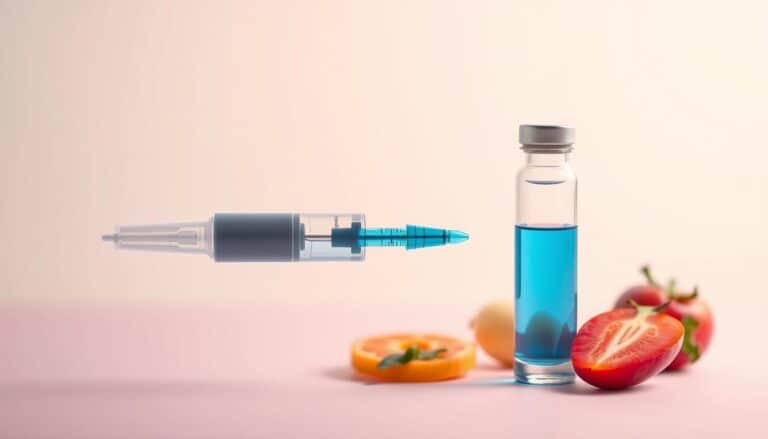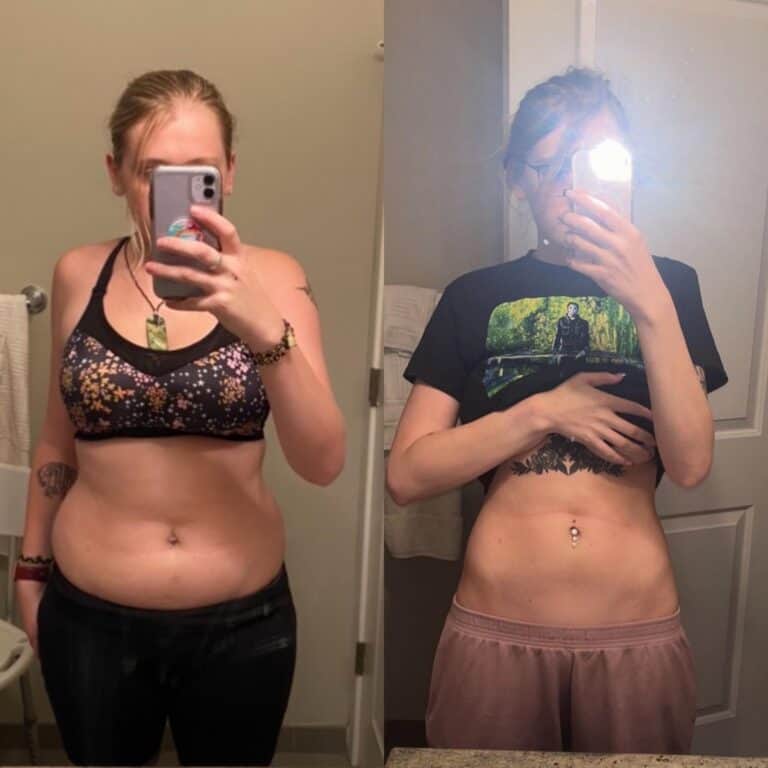Discover the Ultimate Weight Loss Hack How to Lose 20 Pounds in a Month Fast!
Welcome to the ultimate guide on achieving your dream of losing 20 pounds in just one month. If you’ve been struggling with weight loss and are determined to see results, you’ve come to the right place.
In this comprehensive article, we’ll delve into proven strategies, expert insights, and practical advice to help you discover the ultimate weight loss hack.
Are you ready to embark on this transformative journey? Let’s get started!

Setting Realistic Goals
Before embarking on your weight loss journey to shed 20 pounds in a month, it’s crucial to set realistic goals that will guide you toward success. While this goal is ambitious, it’s attainable with the right mindset and approach. Here, we’ll delve deeper into the importance of setting achievable objectives and focusing on your overall well-being.
Understanding Realistic Expectations
Losing 20 pounds in a month is an ambitious target, and it’s vital to acknowledge that individual results may vary. Factors such as your starting weight, metabolism, and genetics can influence the rate at which you shed pounds. Therefore, it’s essential to approach this goal with a sense of realism.
Prioritizing Health and Well-Being
Rather than fixating solely on the number on the scale, shift your focus toward overall health and well-being. Rapid weight loss can sometimes come at the expense of muscle loss or nutritional imbalances. To ensure your journey is not only successful but also sustainable, consider the following:
1. Consult a Healthcare Professional
Before embarking on any weight loss journey, it’s advisable to consult with a healthcare provider. They can assess your current health, provide personalized recommendations, and monitor your progress to ensure your safety throughout the process.
2. Set Incremental Goals
Breaking down your ultimate goal of losing 20 pounds into smaller, more achievable milestones can make the journey less daunting. Celebrate each milestone you reach, whether it’s losing 5 pounds or achieving a fitness milestone like running a certain distance.
3. Focus on Nutrition
Place a strong emphasis on consuming a balanced and nutritious diet. This will not only support your weight loss but also ensure you’re providing your body with the essential nutrients it needs to function optimally.
4. Incorporate Physical Activity
Regular exercise is a key component of a successful weight loss journey. Find activities you enjoy and can sustain over time, whether it’s jogging, cycling, dancing, or yoga. Consistency is more important than intensity.
5. Monitor Your Progress
Keep a journal to track your meals, exercise, and how you feel each day. This can help you identify patterns and make necessary adjustments to your plan.
6. Seek Support
Don’t hesitate to seek support from friends, family, or a weight loss group. Sharing your goals and progress with others can provide motivation and accountability.
7. Be Patient and Kind to Yourself
Remember that setbacks and plateaus are a natural part of the journey. Be patient with yourself and avoid self-criticism. Every step forward, no matter how small, is a step in the right direction.
8. Celebrate Non-Scale Victories
While the number on the scale is one measure of progress, there are other victories to celebrate. Improved energy levels, better sleep, and increased confidence are all positive signs of your commitment to a healthier lifestyle.

The Power of Nutrition
When it comes to achieving rapid weight loss, proper nutrition plays a pivotal role. To reach your goal of losing 20 pounds in a month, it’s essential to fuel your body with the right foods and practice portion control. Let’s delve deeper into how you can harness the power of nutrition for a successful weight loss journey.
Fuel Your Body Right
The foundation of any effective weight loss plan is a balanced and nutritious diet. Here are some key dietary principles to consider:
Lean Proteins
Incorporate lean proteins into your meals. Foods like chicken breast, turkey, fish, tofu, and legumes are excellent sources of protein. Protein is not only essential for muscle maintenance but also helps keep you feeling full and satisfied, reducing the temptation to overeat.
Whole Grains
Opt for whole grains over refined grains. Whole wheat, quinoa, brown rice, and oats are rich in fiber, which aids in digestion and provides long-lasting energy. These grains also help stabilize blood sugar levels, preventing energy crashes and cravings.
Fruits and Vegetables
Fill your plate with a rainbow of fruits and vegetables. They are low in calories and high in essential vitamins, minerals, and antioxidants. These foods not only support your overall health but also provide a sense of fullness and satisfaction.
Healthy Fats
Include sources of healthy fats in your diet, such as avocados, nuts, seeds, and olive oil. These fats are essential for various bodily functions and can help control cravings by keeping you feeling full.
Portion Control
Controlling portion sizes is a crucial aspect of successful weight loss. Here are some strategies to help you manage your portions effectively:
Use Smaller Plates
Opt for smaller plates and bowls to visually trick your brain into thinking you’re eating more substantial portions.
Pay Attention to Hunger Cues
Listen to your body’s hunger and fullness signals. Eat slowly, and stop when you’re satisfied, not when your plate is empty.
Avoid Mindless Eating
Minimize distractions while eating, such as watching TV or scrolling on your phone. Eating mindfully allows you to savor your food and recognize when you’re full.
Pre-Portion Snacks
If you tend to overindulge in snacks, pre-portion them into small containers or bags. This makes it easier to avoid mindless snacking.
Read Food Labels
Check food labels for serving sizes and calorie information. This can help you make informed choices about portion sizes.
Stay Hydrated
Drinking water before meals can help control your appetite and prevent overeating. Sometimes, thirst is mistaken for hunger.
Customizing Your Diet
It’s important to note that there is no one-size-fits-all approach to nutrition. What works for one person may not work for another. Consider consulting a registered dietitian or nutritionist to create a personalized meal plan that aligns with your goals, preferences, and any dietary restrictions you may have.

Effective Exercise Routine
A well-structured and consistent exercise routine is a cornerstone of successful weight loss. To achieve your goal of losing 20 pounds in a month, it’s vital to find an exercise regimen that suits your fitness level and preferences. In this section, we’ll explore how to discover your ideal workout and emphasize the importance of cardiovascular exercise, commonly known as cardio.
Find Your Ideal Workout
The first step in creating an effective exercise routine is finding a workout that you enjoy and can maintain over time. Here are some considerations to help you discover your ideal exercise routine:
Assess Your Fitness Level
Evaluate your current fitness level and any physical limitations. It’s essential to choose exercises that are appropriate for your abilities and gradually progress as you become more fit.
Identify Your Interests
Think about the physical activities you enjoy. Whether it’s dancing, hiking, swimming, or playing a sport, incorporating activities you love into your routine can make exercise more enjoyable.
Set Realistic Goals
Establish clear and achievable fitness goals. These objectives can serve as motivation and help you track your progress. Be sure to include both short-term and long-term goals.
Consult a Fitness Professional
Consider consulting a fitness trainer or coach. They can provide guidance, create a personalized workout plan, and ensure you’re using proper form to prevent injuries.
Mix It Up
Variety is key to preventing boredom and plateaus. Include a mix of cardio, strength training, and flexibility exercises in your routine to target different aspects of fitness.
Don’t Forget About Cardio
Cardiovascular exercises, commonly referred to as cardio, are a crucial component of any effective weight loss program. Here’s why cardio is essential and how to incorporate it into your routine:
Burns Calories
Cardio workouts, such as running, cycling, brisk walking, and swimming, are highly effective for burning calories. They create a calorie deficit, which is essential for weight loss.
Increases Metabolism
Regular cardio sessions can boost your metabolism, helping your body burn more calories even at rest. This can accelerate your weight loss efforts.
Improves Heart Health
Cardiovascular exercises strengthen your heart and improve circulation, reducing the risk of heart disease and other health issues.
Enhances Endurance
Engaging in cardio activities improves your stamina and endurance, making everyday tasks easier and more enjoyable.
How to Incorporate Cardio
To make the most of your cardio workouts:
- Start gradually, especially if you’re new to exercise.
- Aim for at least 150 minutes of moderate-intensity cardio or 75 minutes of vigorous-intensity cardio per week, as recommended by health authorities.
- Mix up your cardio workouts to keep things interesting.
- Consider high-intensity interval training (HIIT) for a time-efficient and effective calorie burn.
- Monitor your heart rate to ensure you’re in your target heart rate zone for optimal results.
Hydration and Weight Loss
Water, often overlooked as a weight loss tool, plays a significant role in achieving your goal of losing 20 pounds in a month. Proper hydration is not only essential for overall health but can also be a valuable asset in your weight loss journey. In this section, we’ll explore the vital role of water in weight loss and how staying adequately hydrated can boost your metabolism and curb cravings.
The Role of Water in Weight Loss
Boosting Metabolism
Proper hydration is closely linked to a healthy metabolism. When you’re well-hydrated, your body can efficiently carry out metabolic processes, including the breakdown of stored fat for energy. In fact, studies have shown that even mild dehydration can slow down your metabolism, making it more challenging to shed pounds.
To harness the metabolism-boosting power of water:
- Aim to drink at least eight 8-ounce glasses of water per day, as a general guideline.
- Consider sipping on water throughout the day rather than consuming large quantities all at once.
- Start your day with a glass of water to kickstart your metabolism.
Curbing Cravings
Did you know that sometimes your body can confuse thirst with hunger? This confusion can lead to unnecessary snacking and overeating. By staying adequately hydrated, you can help differentiate between genuine hunger and thirst, ultimately reducing calorie intake.
To use water to curb cravings:
- Whenever you feel a craving for a snack, try drinking a glass of water first. Give it a few minutes, and you may find that your craving diminishes.
- Infuse your water with slices of citrus fruits, cucumber, or mint for a refreshing and flavorful option without added calories.
Enhancing Exercise Performance
Staying hydrated is essential for optimal exercise performance. When you work out, your body loses fluids through sweat, which need to be replenished to maintain energy levels and prevent dehydration. Proper hydration can enable you to exercise more effectively and for longer durations, accelerating your weight loss progress.
To stay hydrated during exercise:
- Drink water before, during, and after your workouts.
- Consider sports drinks with electrolytes for more intense exercise sessions to replace lost minerals.
Monitoring Hydration
While the “eight 8-ounce glasses a day” rule is a good starting point, individual hydration needs can vary. Factors like climate, activity level, and body size influence how much water you should consume. Pay attention to your body’s signals and adjust your water intake accordingly.

Expert Insights
In your quest to lose 20 pounds in a month, gaining insights from experts can provide you with valuable knowledge and guidance. In this section, we’ll delve into two critical aspects of expert insights: understanding the science behind rapid weight loss and drawing inspiration from real-life success stories.
The Science Behind Rapid Weight Loss
Losing a significant amount of weight quickly, such as 20 pounds in a month, involves a combination of scientific principles and lifestyle changes. Here, we’ll explore some key scientific factors that play a role in rapid weight loss:
Calorie Deficits
Weight loss fundamentally revolves around creating a calorie deficit. This means that you consume fewer calories than your body needs to maintain its current weight. To achieve a calorie deficit, you can either reduce your calorie intake through diet or increase your calorie expenditure through exercise—or ideally, both.
Metabolism
Your metabolism, the process by which your body converts food into energy, is a critical factor in weight loss. Some individuals naturally have a faster metabolism than others, but it can be influenced and optimized through lifestyle choices. Muscle mass, for example, burns more calories at rest than fat tissue, so building lean muscle through strength training can boost your metabolism.
Hormones
Hormones play a significant role in regulating appetite and metabolism. Leptin and ghrelin, often referred to as hunger hormones, signal your body when it’s hungry or satisfied. Understanding how to manage these hormones through proper nutrition and meal timing can be crucial in controlling cravings and appetite.
Nutrient Balance
Balancing your macronutrients (carbohydrates, proteins, and fats) is essential for rapid weight loss. Each macronutrient serves a unique purpose in your diet. For example, protein helps build and repair tissues, while carbohydrates provide energy. A well-balanced diet ensures you get the nutrients needed for weight loss and overall health.
FAQs
Q: Can I really lose 20 pounds in a month? A: While it’s an ambitious goal, it’s possible with dedication and the right strategies. Keep in mind that individual results may vary.
Q: Are crash diets effective for rapid weight loss? A: Crash diets are not sustainable and can have negative health effects. It’s best to focus on balanced nutrition and regular exercise.
Q: How can I stay motivated throughout my weight loss journey? A: Setting smaller milestones, seeking support from friends or a coach, and tracking your progress can help you stay motivated.
Q: Is it necessary to consult a healthcare professional before starting this journey? A: It’s always advisable to consult with a healthcare provider before making significant changes to your diet or exercise routine.
Q: Are there any supplements that can aid in rapid weight loss? A: Some supplements may assist in weight loss, but they should be used with caution and under professional guidance.
Q: What should I do after reaching my weight loss goal? A: Transition to a maintenance plan that includes a balanced diet and regular exercise to sustain your results.
Start Your Weight Loss Journey Today
Achieving rapid weight loss and losing 20 pounds in a month is possible with dedication, a well-balanced approach, and expert guidance. Remember that your health and well-being are the top priorities, so focus on sustainable practices. Now that you’ve discovered the ultimate weight loss hack, it’s time to take action and embark on your transformative journey towards a healthier you.
What To Do Next…
For people who want to stop struggling with their weight

We Now Have FDA Approved Semaglutide Weight Loss in Sarasota and Bradenton Florida. Book a free consultation and find out about the semaglutide cost and semaglutide side effects. Semaglutide injection are available after your free consultation.






